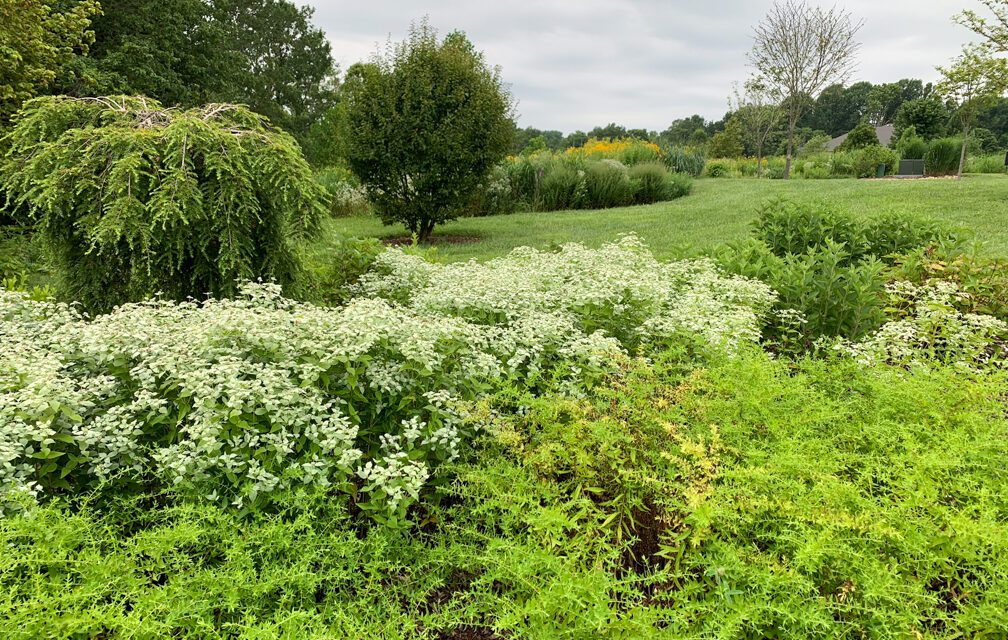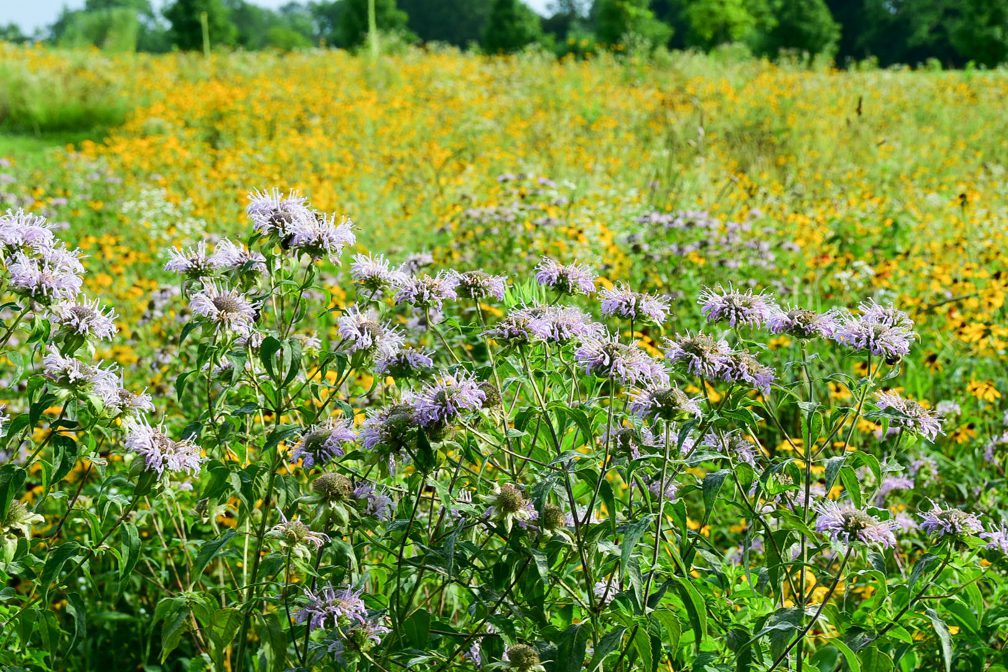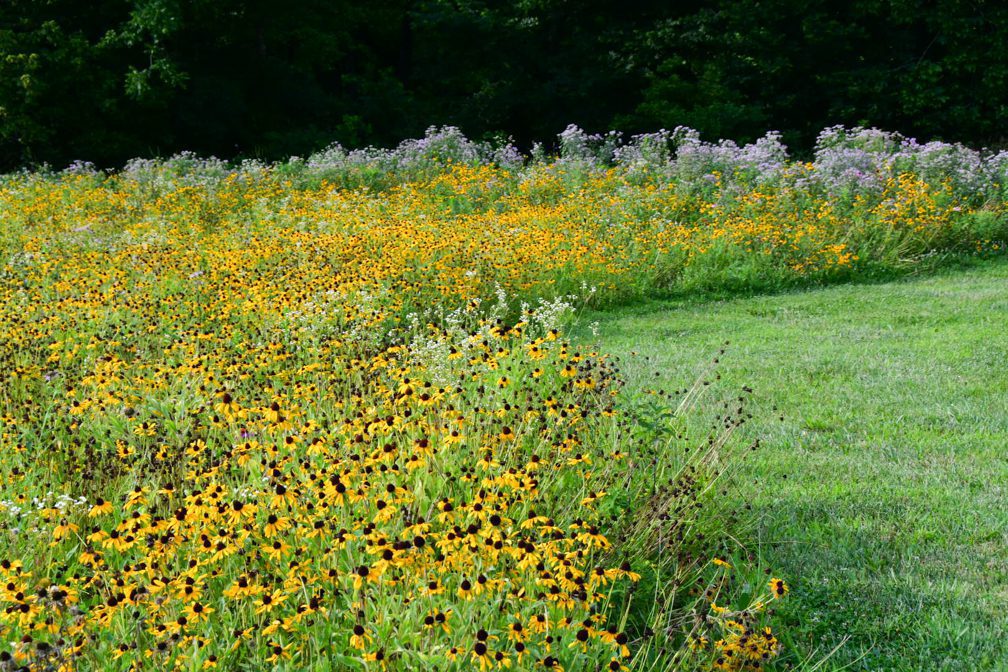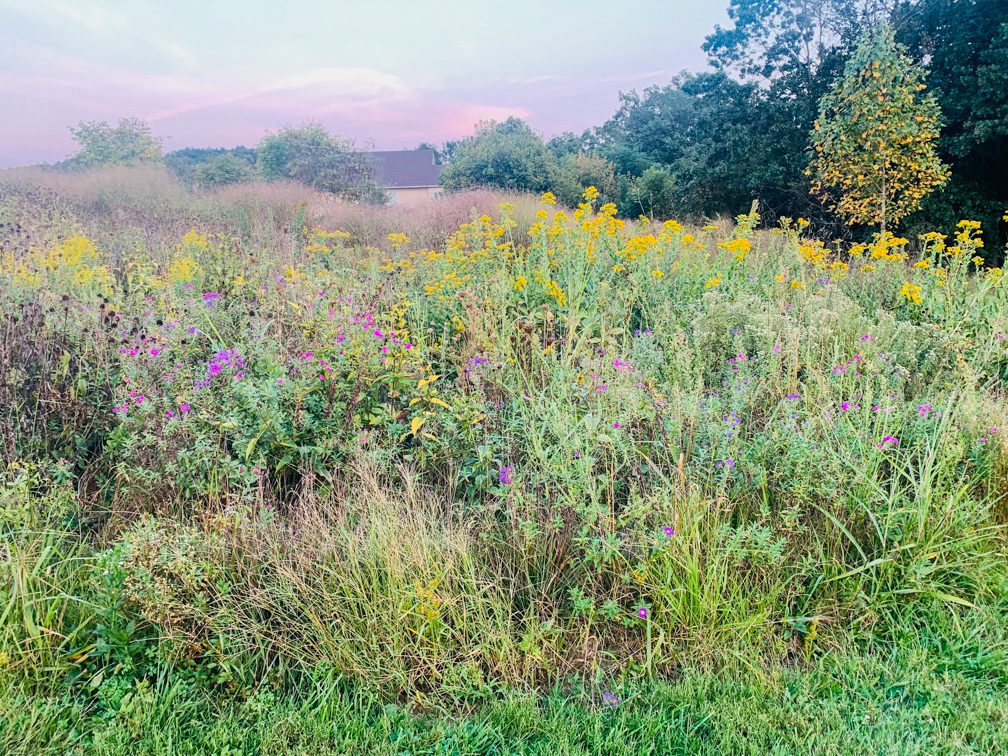Who doesn’t love a field of flowers? Especially native forbs and grasses, where butterflies, moths, pollinators, birds and other beneficial insects eat and shelter. I find the infinite blooms and diverse spaces so much more intriguing than acres of mown grass (not to mention the time, energy and resources that go into mowing). With suburbanization, sprawl and development, we are left with monoculture yards, sometimes on significant acreage, and very little diversity. Forests, woodlands, wetlands and prairies covered Kentucky prior to settlement. 200 years later, less than 1% of the woodlands, prairies and pre-settlement forests that covered Kentucky occur today. According to Douglas Tallamy, if each property owner converted 10-15 perfect of their turf to natives it would create 4-10 million acres of wildlife habitat, low maintenance plantings and productive gardens.
Changing ideas of beauty is also a means of function and environmental stewardship. Pretty is just not good enough. Aesthetics are important, but we need more from our landscapes. This is where prairie plantings and meadows can solve a multitude of issues and I see opportunities all over the country, and especially in Franklin County and the Bluegrass Region. Prairies with native plants can reduce maintenance, provide shelter and food, and are much more interesting with abundant blooms, textures and movement. They provide deep root systems to help stabilize banks and erosion to help areas with flooding issues. There are several neighborhoods in Franklin County that could benefit from such plantings, rather than mowing the grass down to the nub which only exacerbates flooding. Prairies and meadows use the wisdom of natural systems, allowing some plants to grow in the understory, some above, and the plants seem to fit together like perfectly composed music. Many golf courses, neighborhoods, and public parks are seeing the benefit of creating such places and the residents get to enjoy the aftereffects of butterflies, bees, birds, and a renewed interest in nature.
Many homeowners and businesses are opting to convert sterile turf areas into diverse fields and reap the benefit of less maintenance and long term costs. Although most people realize the environmental, health and aesthetic benefits of replacing lawns with natives, some ordinances can lead to controversy over natural landscaping. Pretty, perfect lawns are becoming a thing of the past, but that doesn’t mean natural has to be unkept. There are many ways to provide lawn alternatives and keep a clean look, including mowing a strip around the prairie, bordering with a more formal garden, and many other approaches
A professional can help you determine what species would work with your site conditions, plan successive blooms and seasonal interest, and install the prairie (a multi-step process). As with any planting, maintenance is key to success, especially for the first 2-3 years. Once it is established, it will be low maintenance and only requiring weeding as often as needed and mowing once a year. Look around your neighborhood, or even your own property, to see where a prairie may benefit you, your neighbors and your community.

A native island landscape in the front with the prairie in the background, shows how prairies can be strategically designed and placed to maximize aesthetics and function.

Monarda fistulosa, wild bergamot with black eyed susans in the background in the lower prairie.

The lower prairie in July, as the blooms are beginning to fade, and looking to the house.

The seeded lower prairie in it’s second year, full of black eyed susans, coreopsis and wild bergamot. Longer lived, slower growing species will populate as the prairie ages. This prairie was seeded in spring 2019.

The upper prairie bursts with color in July.

Morning fog sets on the upper prairie, which contains more than 80 species and 6,000 plug plants.